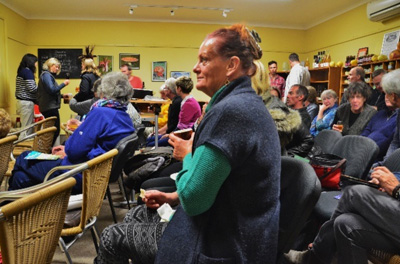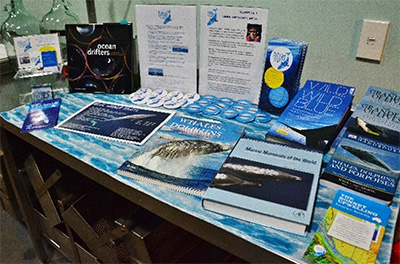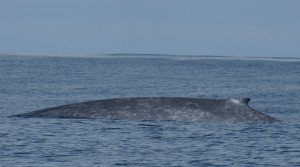
People gather to watch the Blue Whale DVD.
Blue Whale Study volunteer Bec Hall was more than pleased with the fundraising event held recently at Sully’s Cidery to raise funds for the conservation of endangered Blue Whales.
‘To think that here in Braidwood (NSW) we can do something for these magnificent creatures which feed off the coast of Victoria, means people anywhere can do something to help.’ said Ms. Hall.
‘All who attended were generous in their donations and enjoyed a night of fine food, video and a wonderful display of Blue Whale information.’
Blue Whales are listed as Endangered and the Blue Whale Study, based in Victoria, is a charitable organisation led by Dr. Peter Gill, dedicated to the research and conservation of these elusive creatures.
Total donations reached $630 with 37 people in attendance. Items which were distributed included badges, brochures and information sheets.
Although not present on the night, Dr. Peter Gill, Senior Research Scientist with Blue Whale Study said ‘What Bec did just goes to show how passionate people are about the Blue Whale. It is the largest living creature on earth and everything we do to minimise threats and enhance its survival is critical. I cannot thank the people of Braidwood, Scully’s Cidery and Bec enough for their efforts. It’s an inspiration for all of us’.
Discussions on how best to utilise the donations are underway with one option being ocean based surveys to photo-identify individual blue whales.
Media Contact Details:
Dr. Peter Gill
Senior Research Scientist
Blue Whale Study
C/- Post Office
Narrawong Vic 3285
Ph: 03 55 295207
Mb: 0409147875
Email: pete@bluewhalestudy.org
Ms. Louise Sheba, Dr. Peter Gill, Rebecca Hall







